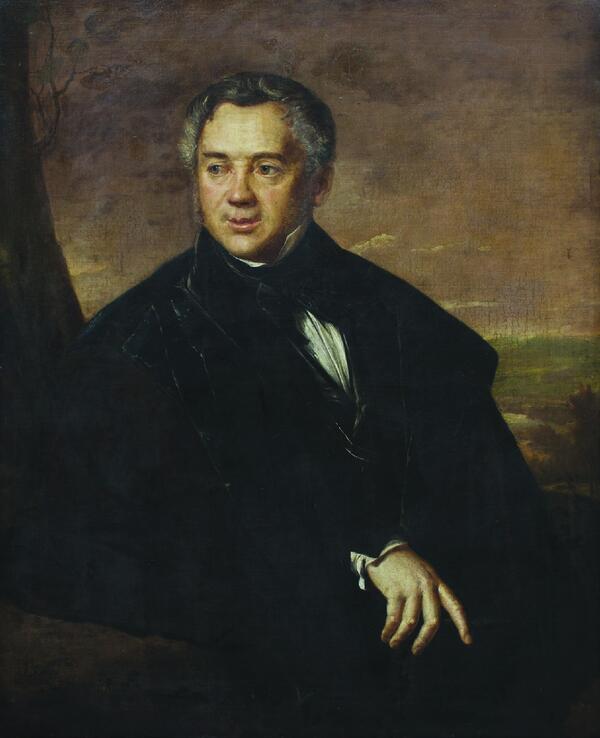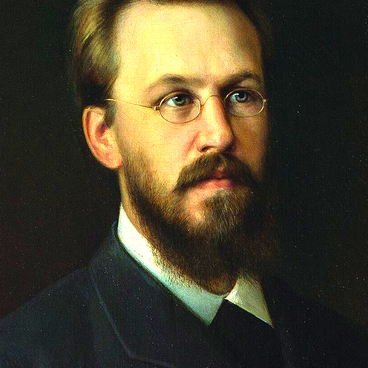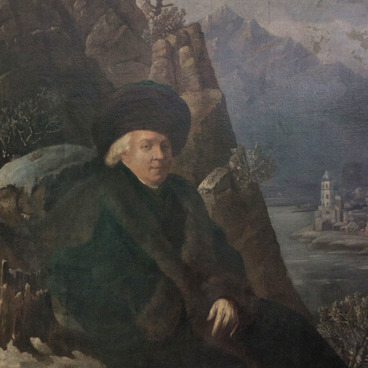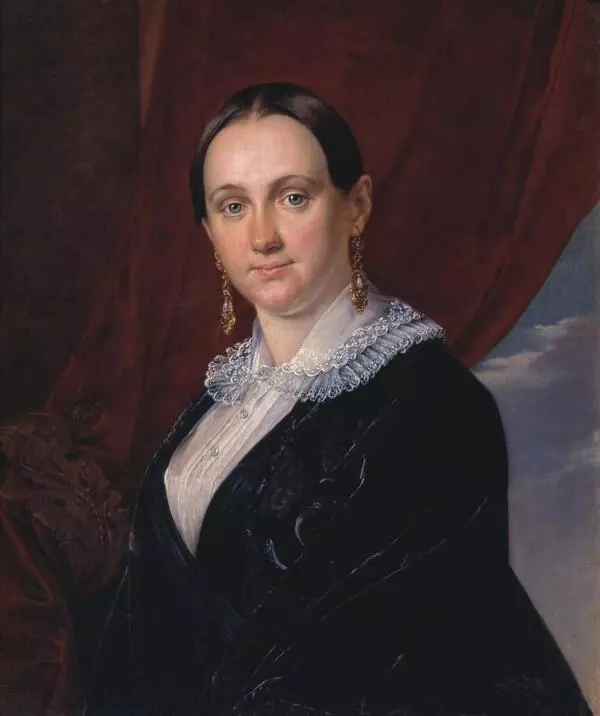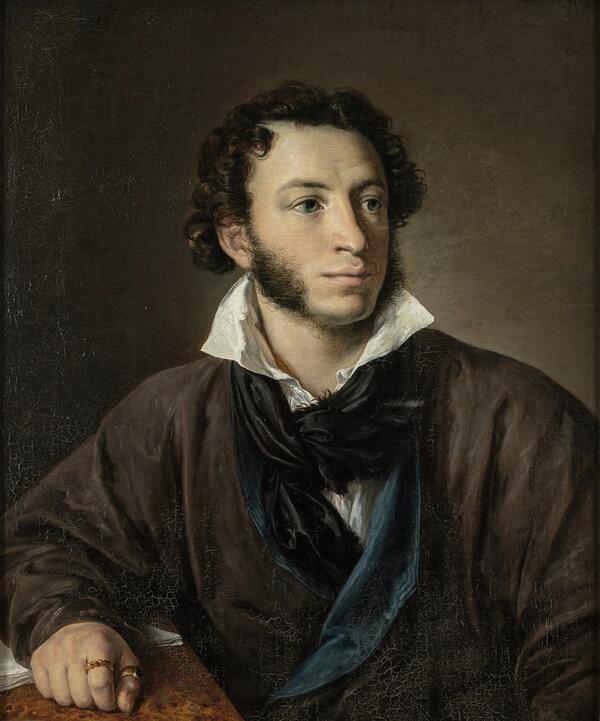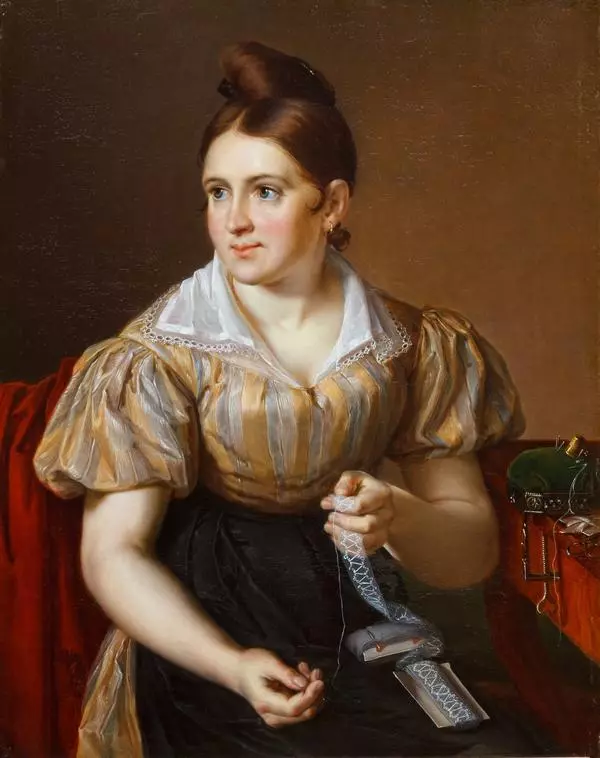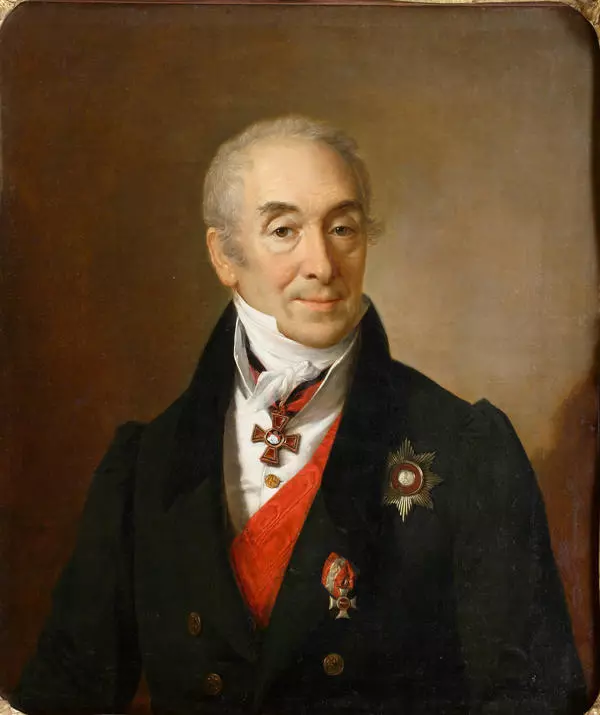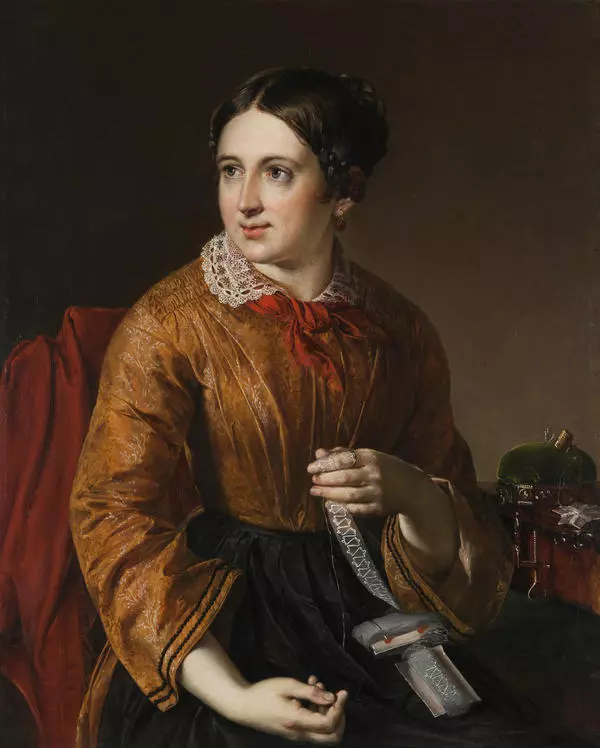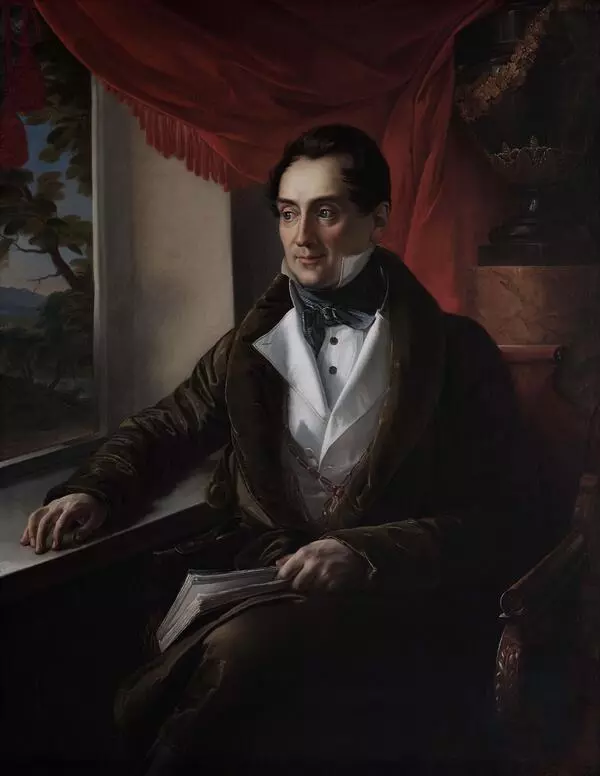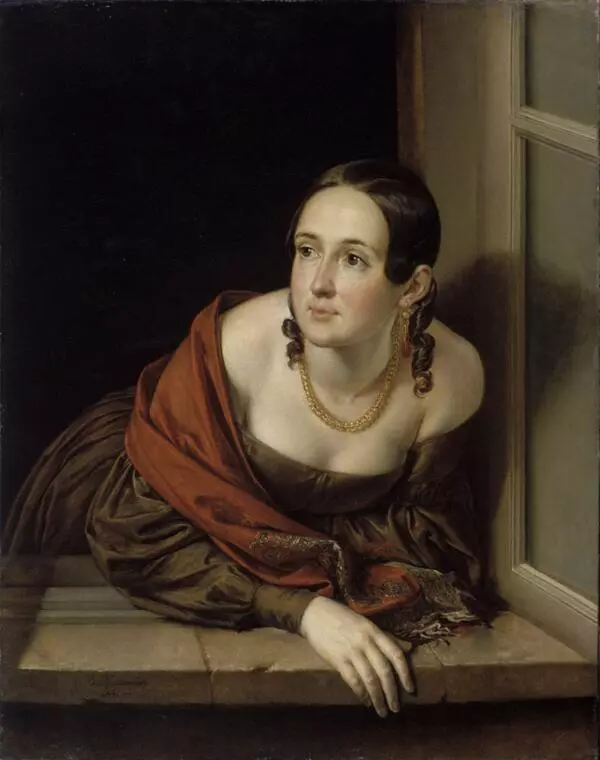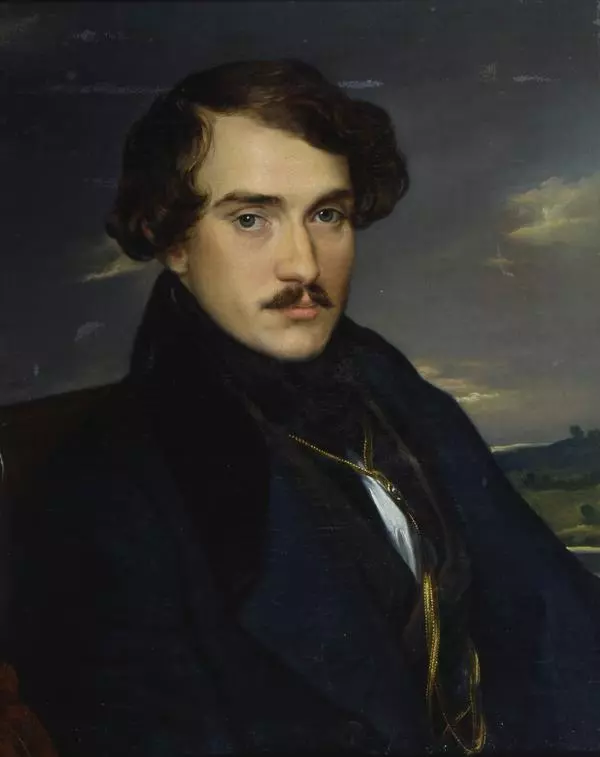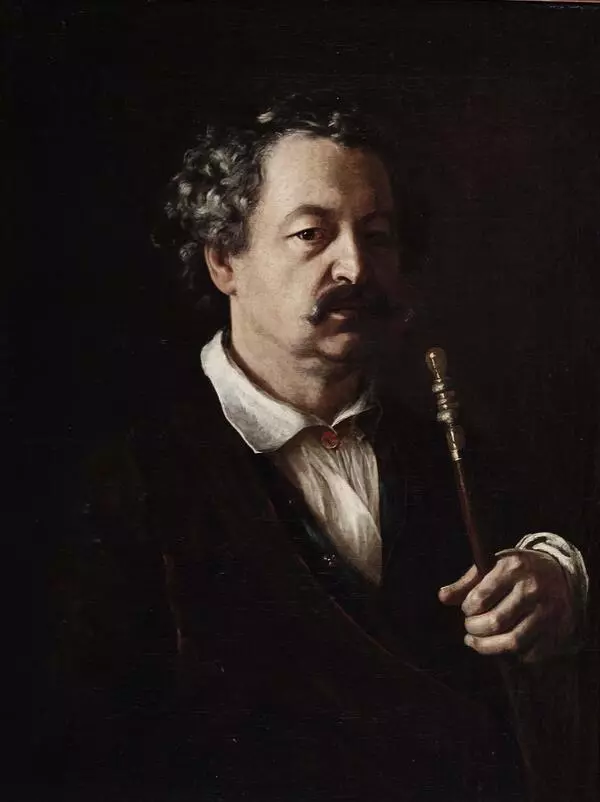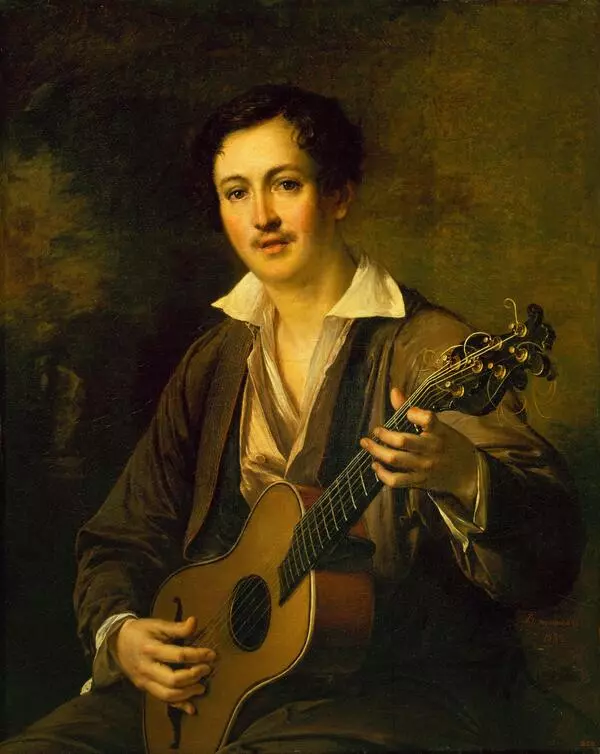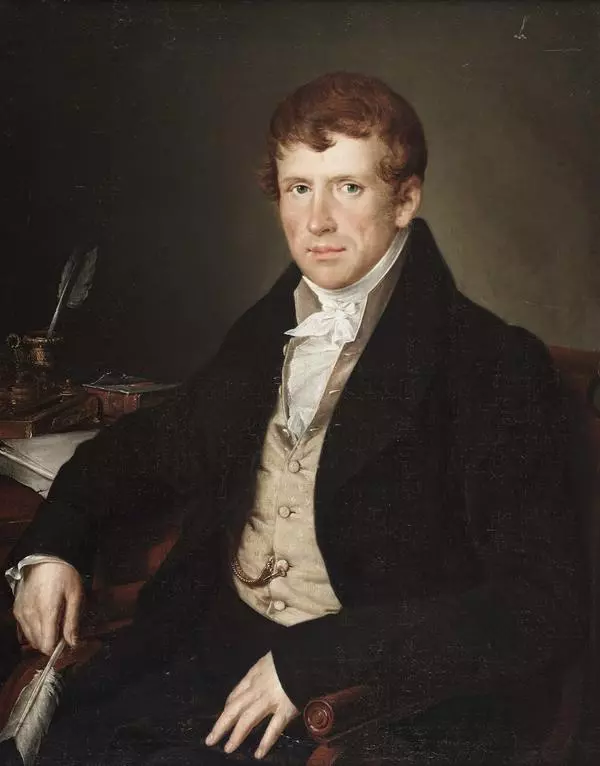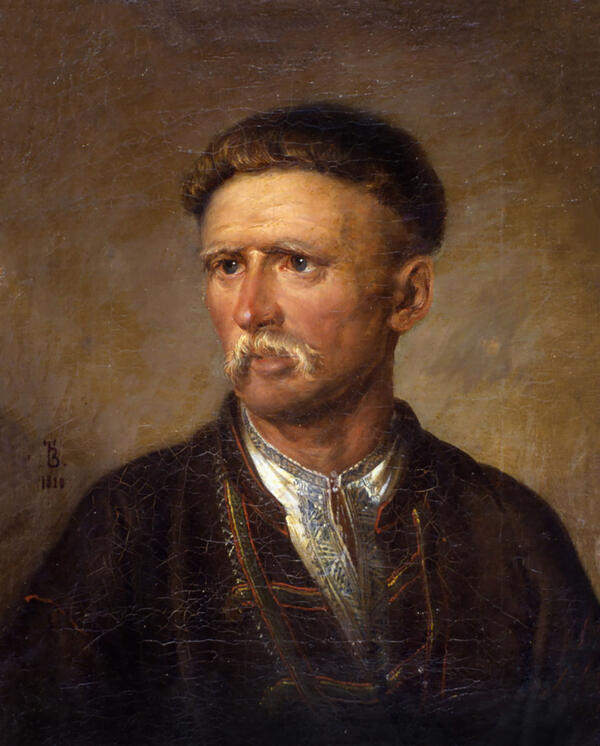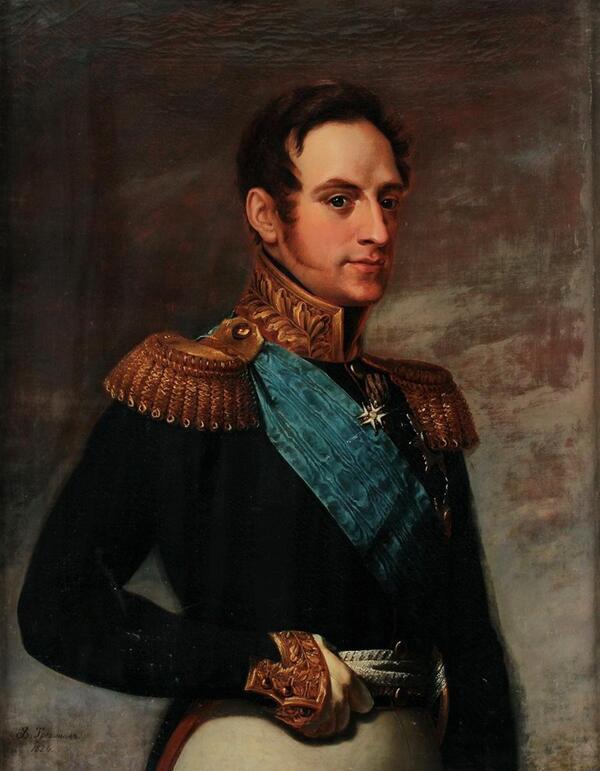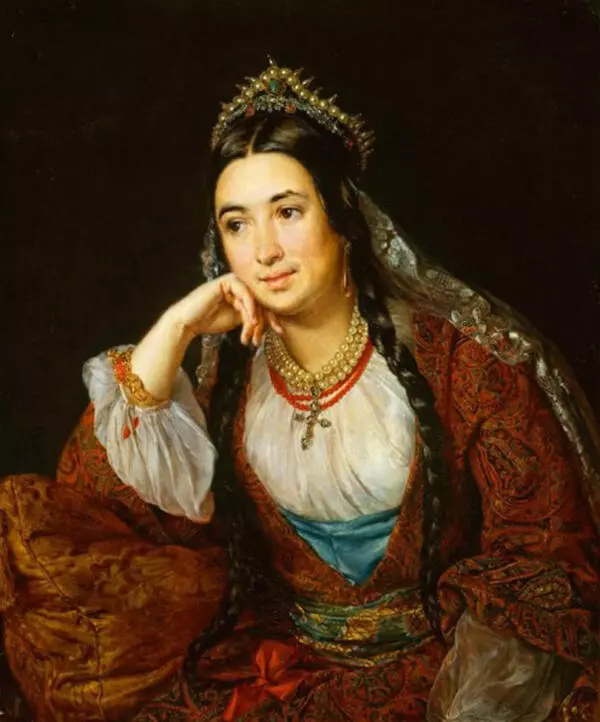The museum collection houses the work of one of the most famous portrait painters of the first half of the 19th century. Vasily Tropinin was born into the family of a serf peasant. In his youth, he painted portraits of his owners (members of the family of Count Morkov), idiosyncratic Ukrainian old men and peasant women with big beautiful eyes. The count ordered Tropinin to build a church in the Ukrainian village of Kukavka and to paint the walls with frescoes. In the meantime, the future painter did housework, painted wells and gates.
Once in St. Petersburg, the talented young man was able to enter the Academy of Arts and join the class of the famous portrait painter Stepan Shchukin. However, Tropinin failed to graduate from the Academy — his owner called him back to the estate. Only at the age of 47 did the artist receive his freedom paying a certain amount of money. He tried his best to be absolutely independent. In 1824, he was recognized as an academician of portrait painting, but the artist refused to stay and teach at the Academy, take commissions from the government, and participate in large exhibitions.
That year he moved to Moscow, where he quickly gained fame and became the leading portrait painter. The atmosphere of the society in Moscow, not as cold and stiff as in St. Petersburg, always inspired the artist. Vasily Tropinin is thought to have invented a special painting — the so-called ‘domestic’ or ‘casual’ portrait. The painter depicted his models in simple clothes and in a relaxed atmosphere. This was the style of his famous portrait of Alexander Pushkin, commissioned by the poet Sergei Sobolevsky.
In the 1820s, Tropinin created portraits of university professors and other noble people in Moscow. His portraits of prominent citizens were displayed in the halls of the Board of Trustees, the Equestrian Hunting Society, and the Agricultural Society. He painted several heroes of the Patriotic War of 1812.
The ‘Portrait of an Unknown Man’ was probably also painted in the capital. This portrait features a typical Moscow resident, characterized by a relaxed posture, a benevolent face expression and the sense of inner freedom.
The painting entered the museum in 1950 from the Moscow Purchasing Commission.
Once in St. Petersburg, the talented young man was able to enter the Academy of Arts and join the class of the famous portrait painter Stepan Shchukin. However, Tropinin failed to graduate from the Academy — his owner called him back to the estate. Only at the age of 47 did the artist receive his freedom paying a certain amount of money. He tried his best to be absolutely independent. In 1824, he was recognized as an academician of portrait painting, but the artist refused to stay and teach at the Academy, take commissions from the government, and participate in large exhibitions.
That year he moved to Moscow, where he quickly gained fame and became the leading portrait painter. The atmosphere of the society in Moscow, not as cold and stiff as in St. Petersburg, always inspired the artist. Vasily Tropinin is thought to have invented a special painting — the so-called ‘domestic’ or ‘casual’ portrait. The painter depicted his models in simple clothes and in a relaxed atmosphere. This was the style of his famous portrait of Alexander Pushkin, commissioned by the poet Sergei Sobolevsky.
In the 1820s, Tropinin created portraits of university professors and other noble people in Moscow. His portraits of prominent citizens were displayed in the halls of the Board of Trustees, the Equestrian Hunting Society, and the Agricultural Society. He painted several heroes of the Patriotic War of 1812.
The ‘Portrait of an Unknown Man’ was probably also painted in the capital. This portrait features a typical Moscow resident, characterized by a relaxed posture, a benevolent face expression and the sense of inner freedom.
The painting entered the museum in 1950 from the Moscow Purchasing Commission.

